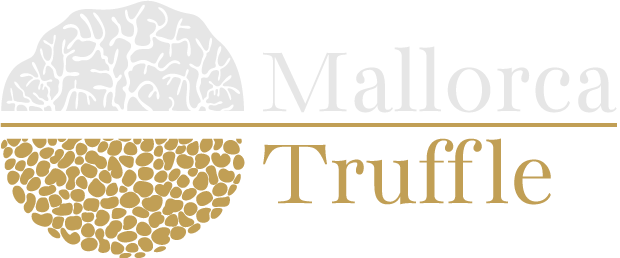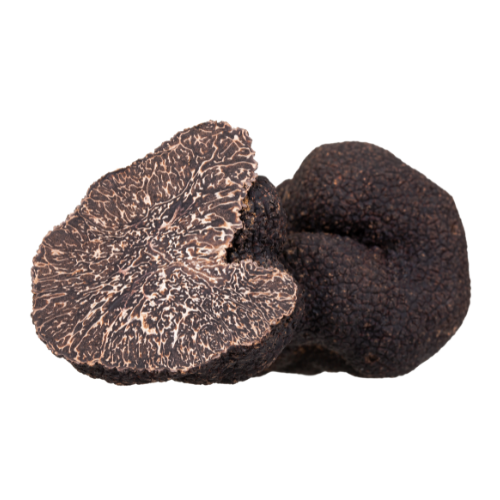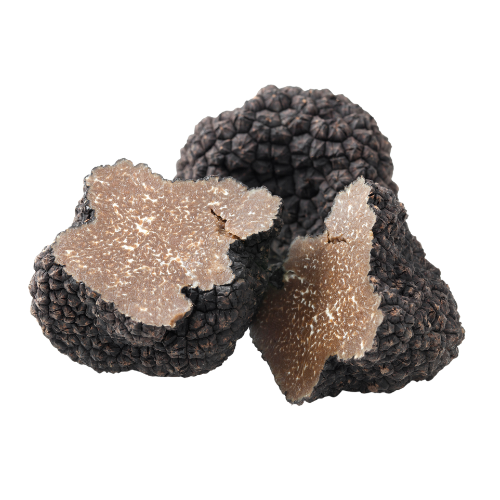Produce the most expensive black Perigord truffle yourself
from 5000m² of free space
Do you have unused space on your finca? Earn cash with your own truffle plantation! From 5000m2 we build, maintain and harvest your own, exclusive Perigord truffle plantation on Mallorca as part of an all-round, worry-free package. The most expensive of all black truffles grows excellently on the soil of Mallorca. Demand is increasing enormously, prices are rising sharply and harvests are usually sold out at the beginning of the season. Benefit from this trend market!
If you don’t have any land yet, we can also offer it as an investment opportunity with a finished truffle plantation!
Example calculation
Truffle grove for Perigord truffles (tuber melanosporum) in Mallorca
| Area (m²) | Max. number of trees | One-off construction costs € gross |
Yield potential (from approx. 7-10 years) kilogram |
Annual sales revenue * (800€/kg) € gross |
Annual sales revenue * (2000€/kg) € gross |
|---|---|---|---|---|---|
| 5.000 | 280 | 54.450 € | 20 | 16.000€ | 40.000 € |
| 10.000 | 560 | 89.100 € | 40 | 32.000 € | 80.000 € |
| 20.000 | 1.110 | 168.300 € | 80 | 64.000 € | 160.000 € |
| 30.000 | 1.670 | 247.610 € | 120 | 96.000 € | 240.000 € |
| 50.000 | 2.780 | 406.120 € | 200 | 160.000€ | 400.000€ |
* Revenues as examples: The price for Perigord truffles will be up to 3,500 euros per kilogram in 2023. Costs for construction, annual maintenance and harvest are based on the assumption that the soil is optimal for truffle cultivation. Only after an exploration and soil test can the exact costs be calculated. Production is assumed to be only 40 kilograms per hectare.
Conventional style truffle grove in Mallorca:
Conventional means that the respective symbiosis trees (e.g. oak, etc.) are planted up to a density of 6 meters row spacing x 3 meter tree spacing. Denser plantings usually do not result in any additional yield. This form of cultivation enables optimal yield opportunities, while at the same time landscaping through the truffle grove. This will add value to your property and produce and sell truffles!
Production quantity:
The calculations given are based on just 40 kilograms of production per hectare (per 10,000m²). The targeted production volume is 100 kilograms per hectare in Europe. Optimally maintained and managed truffle plantations produce over 200 kilograms of Perigord truffles per hectare in Spain.
General
about truffles and their cultivation
Truffles are underground fungi that grow in symbiosis with the roots of certain tree species, particularly oak and hazelnut trees. These mushrooms have a high culinary value and are highly valued in fine dining.
Since truffles were successfully grown in the past, especially in France and Italy, some farmers in Mallorca began to create similar conditions to promote truffle production in the region. The climatic conditions on the island are optimal for the production of Perigord truffles, but careful planning is required to plant the right trees and create optimal conditions for the truffles to grow.
The climate, the nature of the soil and the selection of suitable tree species are crucial factors for the success of truffle cultivation. The oak (Quercus ilex) and the hazelnut (Corylus avellana) are among the preferred tree species for growing truffles.
History
about truffles and their cultivation
Truffle cultivation in Spain has a long history and is closely linked to the country’s culture and agriculture. Historically, truffles have been collected and used in Spain for centuries, but the deliberate cultivation of truffles only began in the second half of the 20th century.
Originally, truffles were collected by truffle hunters (often with the help of specially trained dogs or pigs) in the forests where truffles grow underground, usually in association with oak and hazelnut trees. The Spanish have a long tradition of using truffles in traditional cuisine, particularly in the regions of Aragon, Castile and León, and Navarre.
In the 1970s, some farmers and researchers in Spain began exploring the possibility of growing truffles. Techniques have been developed to plant truffle trees and optimize the growth conditions for the mushrooms. The goal was to supplement the natural truffle harvest and increase the availability of the sought-after mushrooms.





